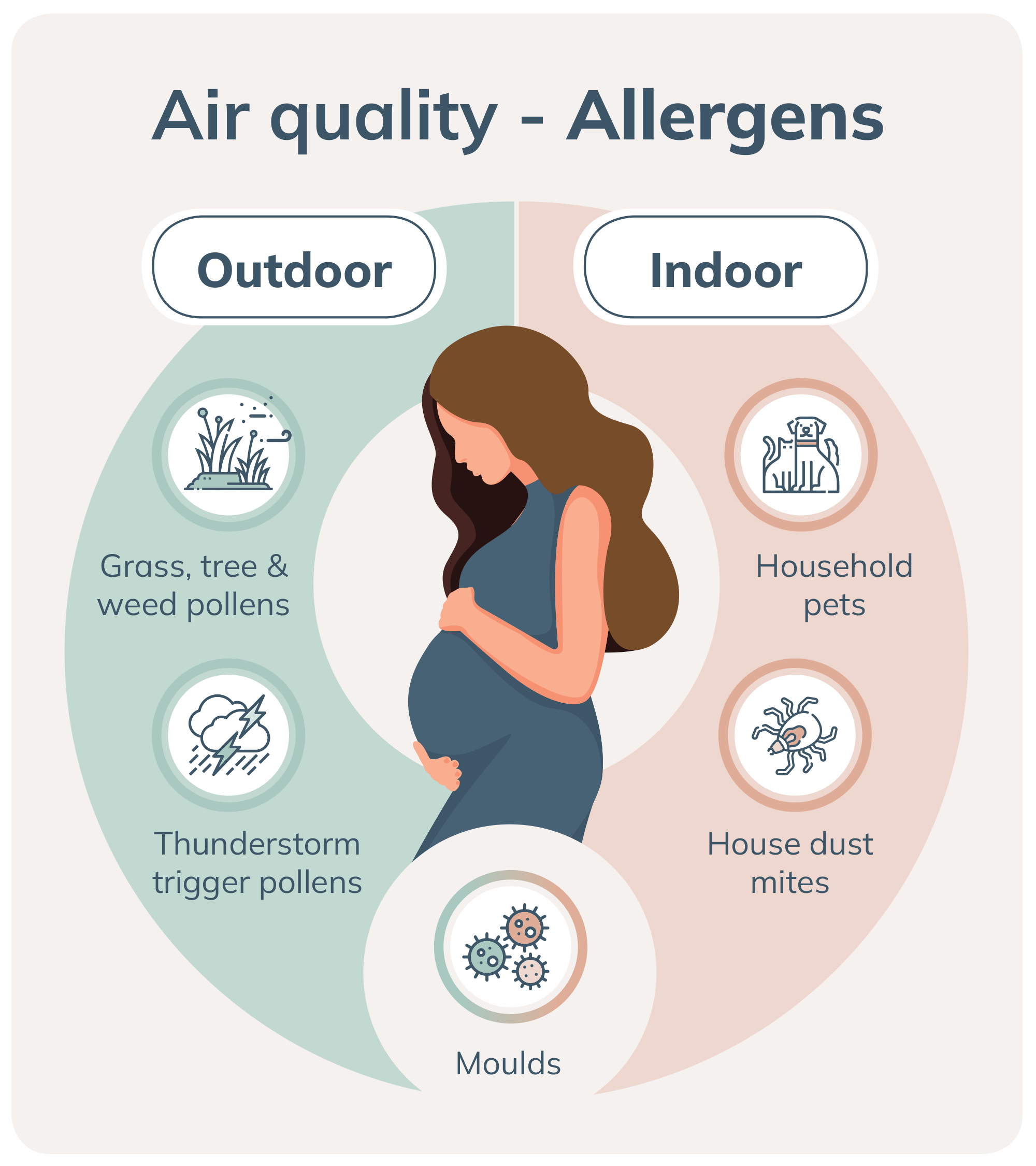
The most relevant indoor allergens for people with asthma are:
- house dust mites
- pet dander
- airborne fungi/mould
Avoidance of indoor allergens often requires a multifaceted approach including removing dust mite reservoirs (for dust mite allergy), keeping pets outdoors, and mould removal and dehumidification (for mould allergy) (Kalayci et al. 2022).
To reduce the vulnerability of people with asthma to these triggers, it is important for them to take their prescribed preventer medication regularly, to help maintain asthma control, particularly where there are household triggers that may be unavoidable.
Mould
Recommendations for prevention and reduction of mould exposure:
- Air out rooms – open doors and windows and remove wet materials.
- Use fans or air-conditioners on dry mode if available.
- Assume all damp items have mould growing on them within one to two days of exposure. It is best to clean up and dry out homes within this time if possible.
(See more information from Asthma Australia including a Mould Factsheet).
Pet dander
Recommendations for reducing effects of pet dander if exposure cannot be avoided:
- Wash hands and clothing after touching animals.
- Regularly clean/vacuum floors, curtains and upholstery or have a family member who is not allergic to the animal, do this.
- Regularly bathe furred animals, if appropriate.
- Keep animals out of bedrooms and away from carpets and soft surfaces where allergens can accumulate.
Dust mites
Recommendations for reducing dust mites and dust mite droppings:
- Wash sheets, pillow cases and other bedding weekly in hot water (above 600 C).
- Remove sheepskin or woollen underlays and any other sheepskin products.
- Use synthetic rather than feather pillows and doonas – these can tolerate regular washing.
- Use dust mite resistant covers for mattresses, pillows and quilts – wash every 2 months.
- If possible, remove carpets, rugs and mats. Bare boards and tiled floors are better as they can be damp mopped.
- Vacuum weekly, including the seams of mattresses and soft furniture. Use a vacuum with a high-efficiency particulate air (HEPA) filter.
